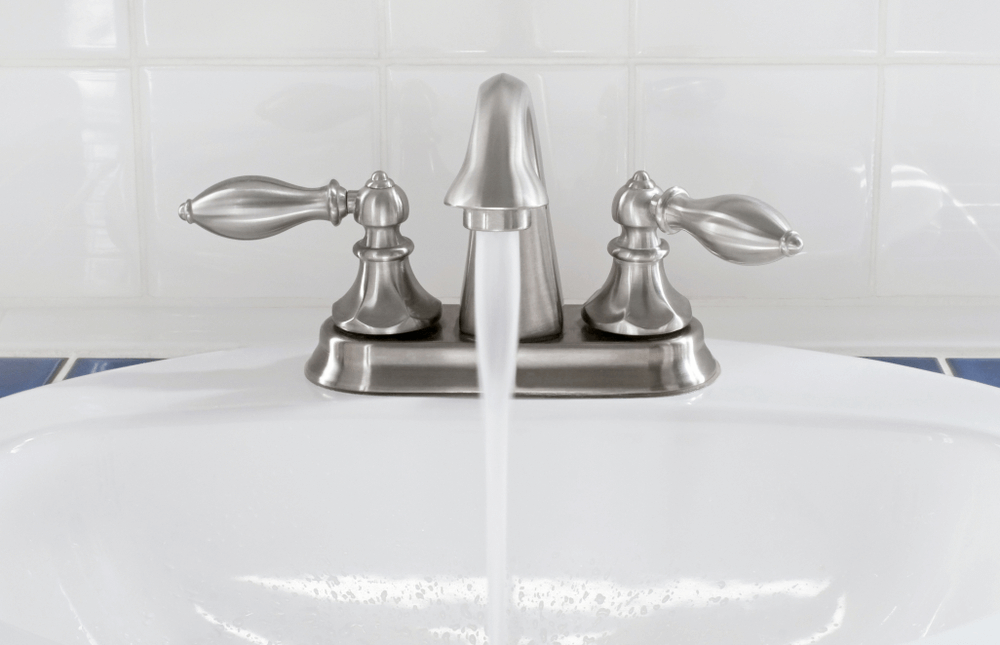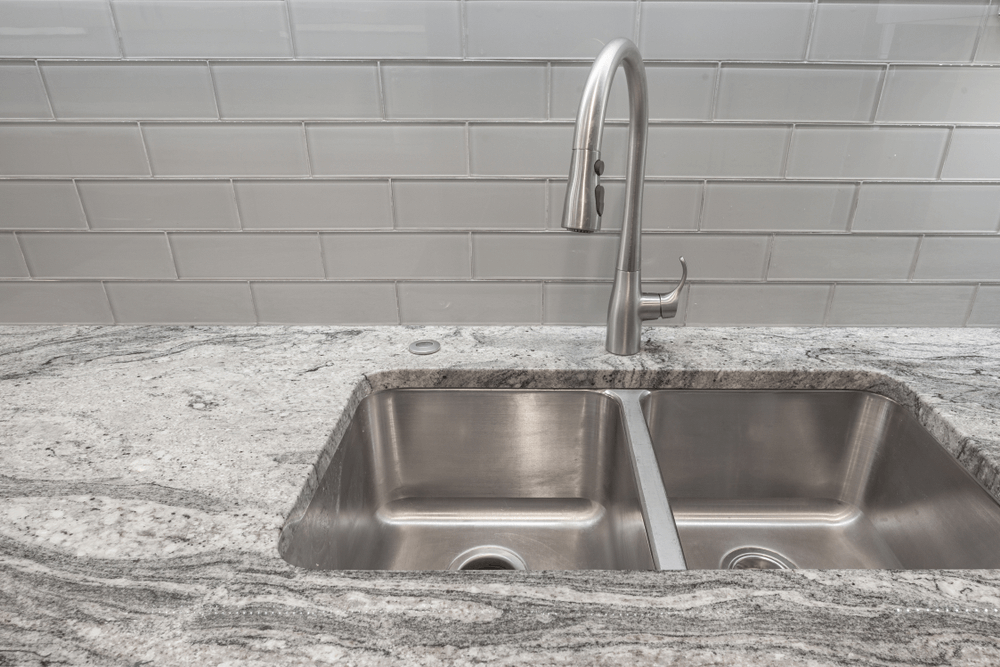When it comes to choosing the perfect finish for your home decor, there’s a lot to consider. Now, among the various options available, satin and brushed nickel are two popular choices. Therefore, if you understand clearly the differences between these two finishes. This can help you decide what is a suitable finish for your home style.
In this article, we will provide an in-depth comparison of two types. We’ll cover their appearance, durability, maintenance requirements, applications, cost, and more. Let’s get started!
What is Satin Nickel
When we talk about satin nickel, it is a well-known finish for various home fixtures and hardware. It often uses by for homeowners a refined and elegant appearance.
Moreover, satin nickel also has a smooth, slightly reflective surface and a matte appearance. So this makes it a popular choice for those who follow a modern and subtle home style.
Another advantage is its ability to resist tarnishing and corrosion. Also, making it an excellent choice for areas exposed to moisture such as kitchens and bathrooms.
What is Brushed Nickel
On the other hand, brushed nickel is also a sought-after finish for home fixtures. If you don’t want your fixtures to show fingerprints, scratches, and other minor imperfections during use. So, you can consider choosing this finish to address your concerns.
Besides, If you want your home to have a modern and contemporary design style, this nickel is a great option. For best results, we recommend applying it to metal surfaces such as cabinet knobs, door handles, and plumbing fixtures.
Additionally, the brushed type also offers good corrosion and tarnish resistance. So, this will make it suitable for use in moist environments.
What is Different Between Satin Nickel vs Brushed Nickel
Everyone often mistakes with these finishes, as it’s difficult to distinguish. But still have some ways to be aware of them to apply to your home style:
Appearance
First, you can rely on their appearance, especially finish and texture. In terms of satin nickel, it boasts a smooth, even surface that softly reflects light, creating a gentle, matte appearance. It means the appearance is softer in hue with less visible brushing
In contrast, brushed nickel possesses a more textured appearance. It comes from the fine lines created during the brushing process. So this can make them clear brush strokes.
Next, about color, you can imagine the comparison of both finishes when you compare a box of crayons to a paint palette. Normally, both finishes have a silver-gray color. But the tone of each finish may vary depending on the base metal used and the specific plating process employed.
For example, satin nickel typically exhibits a warmer, more golden hue. It can complement a wide range of design styles and color schemes.
Additionally, satin nickel is suitable to pair beautifully with warm wood tones, rich fabrics, and classic patterns. This can create an elegant and timeless atmosphere.
On the other hand, brushed nickel often appears slightly cooler and more muted in tone. As a result, it can be an ideal choice for homeowners seeking a more contemporary or minimalist aesthetic.
Furthermore, we come up with color schemes, normally, brushed nickel’s cooler tone works well with a variety of palettes. For example, It can enhance cool and neutral colors, such as grays, blues, and whites. So, this can create your home harmoniously and allow them to take center stage while still adding visual interest to the space.
Durability and Maintenance
Now, we move on to another characteristic is the durability of them. We could recognize that both finishes are known for their longevity and resistance to corrosion.
However, brushed nickel has a slight advantage in durability, thanks to its textured surface. Because the fine lines created by the brushing process not only contribute to its unique aesthetic but also help mask minor scratches and signs of wear. This feature makes this type an ideal choice for high-traffic areas such as entryways, kitchens, and bathroom, fixtures.
Next, when you consider maintenance, both nickel finishes are relatively easy to care for. First, you just need to regularly clean with a soft cloth and a mild soap and water solution. Thus, this process can help you remove dirt, fingerprints, and smudges from the surface.
However, brushed nickel has a slight advantage in this aspect. This means that it may require less frequent cleaning. Thus, making it a more convenient choice for busy homeowners.
Additionally, it’s important to avoid using abrasive cleaners or scouring pads on both finishes. Because these materials can cause scratches and damage the protective layer of nickel. Instead, you should buy non-abrasive cleaning tools to preserve the appearance and longevity of your fixtures.
Type of finishes
Satin nickel
Currently, there are several types of satin nickel finishes available. We’ll provide some common types of satin nickel finishes including:
- Traditional Satin Nickel: This is the most common type, characterized by its smooth, slightly reflective surface and warm, golden hue. It is often used for fixtures, hardware, and home accessories.
- Satin Nickel with Clear Coat: This type features an additional clear coat layer that provides extra protection against corrosion, scratches, and tarnish. Additionally, the clear coat also adds a subtle sheen to the surface, enhancing its visual appeal.
- Antiqued Satin Nickel: This type is created by applying a darkening patina to the surface of the satin nickel finish, giving it an old and aged appearance. So, this finish is ideal for those looking to achieve a vintage or rustic aesthetic in their home decor.
- PVD Satin Nickel Finish: This is an advanced coating process that applies a finish using a chemical vapor method. These finishes are known for their enhanced durability and resistance to tarnishing and corrosion compared to other types.
Brushed Nickel
We have several types of Brushed Nickel. We will give you some information on common types:
- Traditional types: This is the most common type, characterized by its slightly textured surface and fine linear brush marks. The finish is slightly duller than a satin nickel. So, this makes it ideal for hiding fingerprints and minor scratches.
- Brushed Nickel with Clear Coat: This type features an additional clear coat layer that provides extra protection against corrosion, scratches, and tarnish. The clear coat also adds a subtle sheen to the surface, enhancing its visual appeal.
- Antiqued Brushed Nickel: In this type, it is created by applying a darkening patina to the surface, giving it an aged appearance. This finish is ideal for those looking to achieve a vintage aesthetic in their home decor.
- Matte Brushed Nickel: This type is a variation of the traditional brushed nickel finish, featuring a more subdued sheen and a flatter appearance. This finish is particularly well-suited for contemporary or minimalist design styles.
- Brushed Nickel with Polished Accents: This type combines the textured surface with subtle polished accents. So, it will create a unique and visually interesting appearance. The polished accents can help to highlight the details of the fixture. It also helps add depth and dimension to the design.
Cost and Availability
When comparing the costs of both finishes. You need to consider the specific products and manufacturers.
In general, brushed nickel may be slightly more expensive in some cases due to the process. Because if you add more texture to the surface, it requires extra labor and time.
So, if you wondering don’t know which finish is affordable and also suitable for your house decor? We highly recommend you need to research more about factors. These include the quality of the materials, the complexity of the design, and the brand reputation. If you care about the quality, of course, it will likely carry a higher price tag.
If you wonder about availability, both types are widely accessible in home improvement stores, specialty shops, and online retailers. Thus, you are not worried to find where you buy.
You just need to research carefully various manufacturers and retailers to find the best quality, pricing, and selection. In addition, consider reading customer reviews and seeking professional advice. This will make informed decisions and ensure you’re selecting the proper products.
In conclusion, both types may vary depending on many factors. We have provided you with detailed information above. Additionally, when choosing the suitable type of finish, not only should you compare the factors mentioned earlier, but also consider aspects such as quality, design, and brand reputation.
Related Post: Polished Nickel vs Chrome: Suitable Choice for Your Home
How to Choose Between Satin Nickel vs Brushed Nickel
When deciding between both finishes, consider the following factors:
- Aesthetic preferences: Which finish best matches your style and the overall design of your home? If you prefer a smooth, slightly reflective surface, satin nickel may be the better choice. If you like a more textured, matte appearance, consider brushed nickel.
- Durability and maintenance: While both finishes are durable, brushed nickel has a slight advantage. Because its textured surface can make it easier to maintain, as it can conceal fingerprints and smudges more effectively
- Corrosion resistance: Both finishes offer good corrosion resistance, but be sure to consider the base metal as well. Brass or stainless steel base metals will provide better protection against corrosion.
Generally, the choice between both types comes down to personal preference and the specific needs of your home.
Conclusion
Satin and brushed nickel are two popular finishes for home decor, each offering its unique appearance and benefits. So, you can consider factors such as appearance, durability, maintenance, and corrosion resistance. This helps you can make an informed decision that best suits your style and needs. Whether you choose any type, these can add a touch of sophistication and elegance to your home.
FAQs
The key difference lies in their finish and texture. Satin nickel has a smooth, slightly reflective surface, while brushed nickel has a more textured, matte appearance.
Normally, both nickel finishes can develop a patina. If you prefer to maintain the original appearance, you should regular cleaning and maintenance will be necessary.
We recommend that you need to consider factors when you make a decision. This includes aesthetic preferences, durability and maintenance, and corrosion resistance. Additionally, the choice between satin and brushed nickel will depend on your style and the specific needs of your home.








